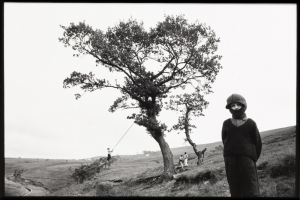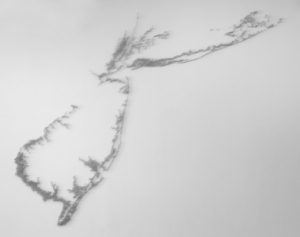|
Displaying items by tag: landscape
The first significant new museum of American art in nearly half a century debuted in 2011. But to view Crystal Bridges' collection—from a Gilbert Stuart portrait of George Washington to Jackson Pollock canvases—you don't travel to New York, Los Angeles or Chicago. You head down a forested ravine in a town in northwestern Arkansas.
As museum founder and Walmart heiress Alice Walton scooped up tens of millions of dollars' worth of art from across the country, thinly veiled snobbish rhetoric began to trickle out from the coasts. Most notably, when she purchased Asher B. Durand's 1849 "Kindred Spirits" from the New York Public Library for $35 million, some culturati bristled at the thought that this famed Hudson River School landscape would be leaving for Bentonville. The controversy raised the question: Who deserves access to great art?
A little-known Dutch collection of Indian chintzes, newly acquired by the Peabody Essex Museum in Salem, Mass., is revealing centuries of changing habits in fabric exporting, collecting and tailoring.
The museum paid an undisclosed price for about 170 textiles, including bedspreads, caps, jackets and robes, dating to the early 1700s. The designs combine European folk patterns and botanical motifs typical of Mughal landscape paintings.

“Bruce Davidson/Paul Caponigro: Two American Photographers in Britain and Ireland,” at the Yale Center for British Art, is a strange but memorable pairing. It joins the Magnum photojournalist Bruce Davidson, best known for his aggressive New York street and subway photography, to a spiritually minded landscape photographer in the mold of Ansel Adams and Minor White. And although its title suggests some shared expatriate experience, a split quickly develops.
The curators, perhaps acknowledging as much, divide the third-floor galleries neatly down the middle. At times, it seems as if Mr. Davidson and Mr. Caponigro are re-enacting a classic contest in 20th-century photography, a competition between the meticulously technical, landscape-driven Bay Area School of Adams and Edward Weston, and the spontaneous street photography of Mr. Davidson’s mentors, Cornell Capa and Henri Cartier-Bresson (who is said to have remarked, “The world is falling to pieces, and all Adams and Weston photograph is rocks and trees.”)
The most spectacular artistic rivalry in British history will be revived in September when blockbuster exhibitions by two of the nation's most renowned painters pitch them into direct competition, just as they were in their lifetimes two centuries ago.
The simultaneous shows unavoidably provoke the question asked ever since the artists were showing side by side in the Romantic age: who is the greatest British painter ever?
Is it Joseph Mallord William Turner, whose glowing, occasionally abstract, visions of sea and sky and the violent elements are celebrated at Tate Britain from 10 September? Or is it his contemporary John Constable, whose acute observations of the clouds, trees and changing light of his native Suffolk are examined at the V&A 10 days later?
The Louisiana Museum of Modern Art, which is located on the outskirts of Copenhagen, Denmark, is hosting its first major solo exhibition of Danish-Icelandic artist Olafur Eliasson. Eliasson, who is widely considered one of the most influential and pioneering artists of his generation, is best known for his sculptures and large-scale installations that employ natural materials.
“Riverbed,” a radical, site-specific installation, transforms the landscape of the museum as well as the visitors’ journey through the reimagined space.
Sculptures by the two artists featured here in temporary presentations at Storm King Art Center this year couldn’t be less alike. A single Minimalist piece by the New York sculptor Virginia Overton is gracefully fitted to the landscape of gently rolling hills. Six monumental, figurative sculptures by Zhang Huan of Shanghai are ponderously theatrical.
Ms. Overton’s untitled piece is a straight, nearly 500-foot length of brass tubing about four inches in diameter elevated four feet above the ground by thin rods. From a valley between low hills, it follows an upward slope to its peak and then disappears over the other side.
Good fortune or just plain chance sometimes dictates the collecting directions of art museums. That is certainly the case with the Indianapolis Museum of Art, which received a bequest of 96 Neo-Impressionist works in 1979 from W.J. Holliday, a local publisher and art collector. Combined with a significant landscape it owned previously by Georges Seurat and seven targeted acquisitions since, the 131-year-old institution lays claim to being the most important repository in the U.S. of works in the eye-grabbing pointillist style.
Capitalizing on that signature strength, the museum has organized "Face to Face," which it bills as the first-ever look at Neo-Impressionist portraiture, a subject that has received less attention than the landscapes, seascapes and urban scenes more typically associated with the style. The two-venue exhibition was seen earlier this year at the ING Cultural Centre in Brussels.
The 2014 New Orleans Antiques Forum, “Southern Expression,” will explore the many facets of regional style with acclaimed experts in the field of decorative arts. This year’s topics include furniture, pottery, mourning jewelry and art, southern landscape paintings, clocks, quilts, and more.
The Historic New Orleans Collection established the New Orleans Antiques Forum (NOAF) in 2008 in an effort to boost cultural tourism in New Orleans and south Louisiana following Hurricane Katrina. Centered on a series of educational and entertaining talks, the three-day forum encourages the appreciation of decorative arts created in and imported through the Gulf Coast. Sessions are accessible to experienced collectors as well as beginning antiques enthusiasts.

In the third iteration of its Platform series, the Parrish Art Museum presents artist Maya Lin, whose ecologically inspired works exist at the intersection of art, architecture, and environmental science. Platform: Maya Lin, opening July 4 and continuing through October 13, 2014, reveals the artist's exploration of how humans experience and impact the landscape. It will be on view during the Parrish Art Museum's annual gala, the Midsummer Party, on July 12, 2014.
Platform: Maya Lin features Lin's Pin River-Sandy (2013), a massive geographical installation depicting the boundaries of Hurricane Sandy's flood plain, composed of thousands of straight pins. Installed on the east wall of the Norman and Liliane Peck/Peter Jay Sharp Foundation Gallery, the work has a span of 12 feet (112 5/8 x 144 x 1 1?2 inches). Lin's three marble sculptures, Arctic Circle (2013), Latitude New York City (2013), and Equator (2014), representing the typographies at each of these positions on the globe, are installed in concentric rings in the center of the gallery floor. Three new, recycled silver works, Accabonac Harbor (Long Island Triptych), 2014, Georgica Pond (Long Island Triptych), 2014, and Mecox Bay (Long Island Triptych), 2014, are particularly relevant to the location of the Museum on Long Island's East End, and are installed on the wall opposite Pin River-Sandy.
Organized to mark the 50th anniversary of the death of Georges Braque (Argenteuil-sur- Seine, 1882−Paris, 1963), this large retrospective covers all the phases of the career of one of the most important artists of the 20th century. As one of the creators of Cubism, along with Pablo Picasso and Juan Gris, and a pioneer of the papiers collés (glued papers), Braque focused his later work on the methodical exploration of still-life and landscape. He was considered the French painter par excellence, inheriting the classical tradition and also a precursor for the abstraction of the post-war period.
|
|
|
|
|